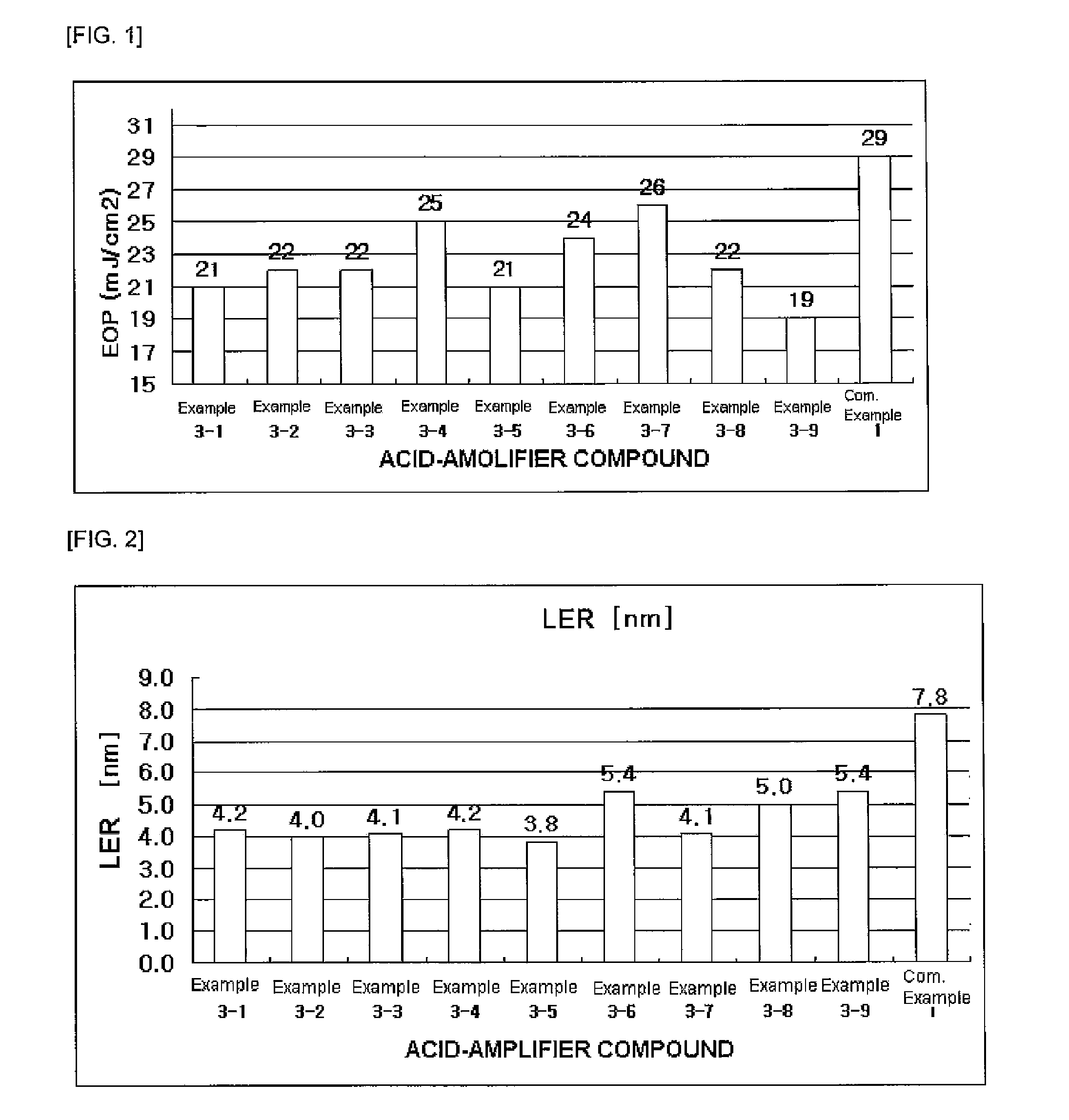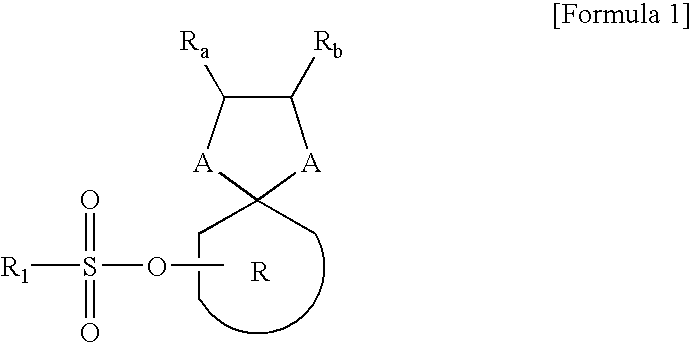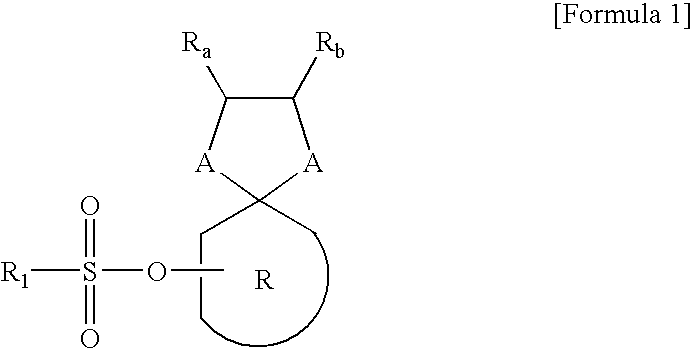Acid-amplifier having acetal group and photoresist composition including the same
a technology of acetal group and acidamplifier, which is applied in the direction of photosensitive materials, instruments, photomechanical equipment, etc., can solve the problems of unsatisfactory ler of photoresist pattern and insufficient photoresist energy sensitivity, so as to improve the ler of photoresist pattern and improve the effect of photoresist energy sensitivity
- Summary
- Abstract
- Description
- Claims
- Application Information
AI Technical Summary
Benefits of technology
Problems solved by technology
Method used
Image
Examples
examples 1-1 to 1-6
Synthesis of Intermediate Represented by Formula 4
[0029]Hydroxy ketone compound of Formula 2 and compound of Formula 3 having two alcohol groups or thio alcohol groups as shown in following Table 1 were added to a reactor, and then 100 ml of tetrahydrofuran (THF) of solvent was added to the reactor to dissolve the reactants. Then the dissolved reactant was stirred while maintaining at room temperature. 3.4 g of p-toluene sulfonyl acid (PTSA) was dropped to the stirred reactant. After completing the dropping of PTSA, the temperature of the reactor was regulated at 60° C. and the contents in the reactor was stirred for 12 hours. After completing the stirring, 200 ml of de-inoized water was poured to the reactor. Then the reaction product was extracted with 300 ml of dimethylchloride three times. The organic solution obtained from the above reaction was dried with anhydrous magnesium sulfate and distilled under the reduced pressure. The compound obtained by the distillation was re-crys...
examples 2-1 to 2-9
Preparation of Acid-Amplifier Represented by Formula 1
[0030]An intermediate of Formula 4 obtained in each of Examples 1-1 to 1-6 as shown in following Table 2 and 21.2 g (0.21 mol) of tri-ethylamine were added to a reactor, and then 100 ml of THF as the solvent was further added to the reactor to dissolve the reactants. Then the dissolved reactant was stirred while maintaining at 0° C. Here, solution which was made by dissolving sulfonyl hydride represented by Formula 5 shown in following Table 2 in 500 ml of THF, was slowly dropped with a dropping funnel to the reactor. After the dropping the sulfonyl hydride, the contents in the reactor was stirred for 6 hours while temperature of the reactor was regulated to room temperature. After the stirring, the reaction solution stirred was filtered to remove salts produced therefrom and 200 ml of de-ionized water was poured to the reactor. Then the reaction product was extracted with 300 ml of dimethylchloride three times. The organic solut...
PUM
| Property | Measurement | Unit |
|---|---|---|
| weight % | aaaaa | aaaaa |
| temperature | aaaaa | aaaaa |
| size | aaaaa | aaaaa |
Abstract
Description
Claims
Application Information
 Login to View More
Login to View More - R&D
- Intellectual Property
- Life Sciences
- Materials
- Tech Scout
- Unparalleled Data Quality
- Higher Quality Content
- 60% Fewer Hallucinations
Browse by: Latest US Patents, China's latest patents, Technical Efficacy Thesaurus, Application Domain, Technology Topic, Popular Technical Reports.
© 2025 PatSnap. All rights reserved.Legal|Privacy policy|Modern Slavery Act Transparency Statement|Sitemap|About US| Contact US: help@patsnap.com



